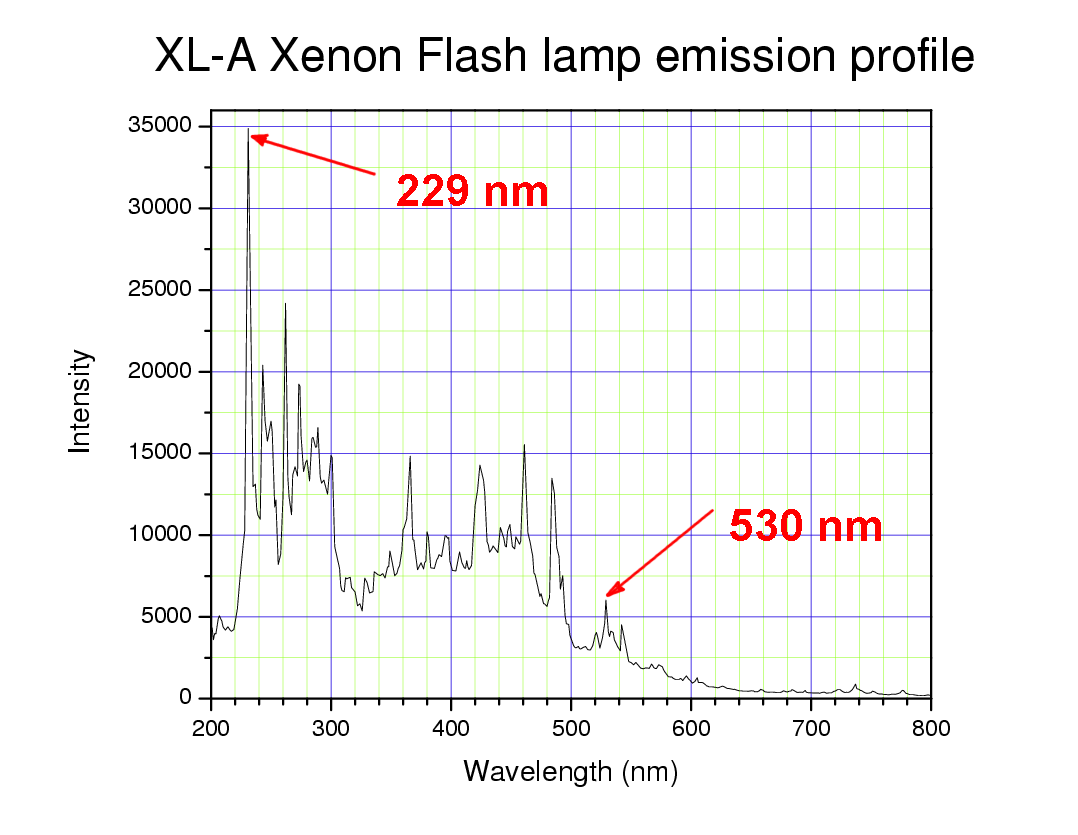Confirming Optical System Performance
Xenon Flash Lamp Emission Profile
Absorbance optics uses a Xenon flash lamp and the intensity of the lamp varies over the spectral range. See image below. Xenon flash lamps are good at emitting visible light down to 190 nm, but above 500 nm, the intensity drops off rather precipiticely. Around 800 nm, the intensity will be a small fraction of what can be seen around 230 nm. If you must measure at higher O.D. values, and you want a lot of singal, measuring at 230 nm may be a good idea.

Figure: Emission profile for a Xenon flash lamp.
To measure the XENON LAMP EMISSION PROFILE, run an intensity wavelength scan over the dynamic range of the instrument on an empty hole at 6.5 cm. Rotor speed is irrelavent; it is commonly set to 3,000 rpm. You should see a profile similar to the one above, with a peak intensity at 230 nm of at least 15,000 counts. If the intensity is much less than this, clean the lamp, or call for Beckman Services to check the optical system, mirror, PMT, and/or powersupply.
If you want to attempt to clean the lamp yourself, and the count is still lower than 15,000 counts, the lamp may need to be aligned.
For the XL-A: rotate the lamp in the lamp housing and repeat the intensity scan. Repeat for one full turn, identifying the position that produces the highest intensity. Verify that this is reproducible across every position in the cell.
Monochromator Function
To measure MONOCHROMATOR FUNCTION, run an intensity wavelength scan over the dynamic range on an empty hole at 5.2 cm, 6.5 cm, and 7.1 cm. If the intensity peaks shift, the monochromator may not be working properly.
Slit Assembly Performance
For SLIT ASSEMBLY PERFORMANCE testing, you will need to scan a cell with some solution (irrelavant) with 280 nm or 230 nm. Check the overlaid menisci of 40-50 scans. They should form a single sharp peak. If the meniscus shifts back and forth, the slit assembly may need to be serviced.
The slit assembly is a gold foil with laser-etched slits that provides the radial resolution measured by the PMT. This mechanical assembly in the Proteomlab is driven by a servo motor; the Optima AUC uses a digital stepping motor. The stepping motor is much more radially precise at 10 micron resolution. If there is dirt on the slit assembly, it may cause some stepping.